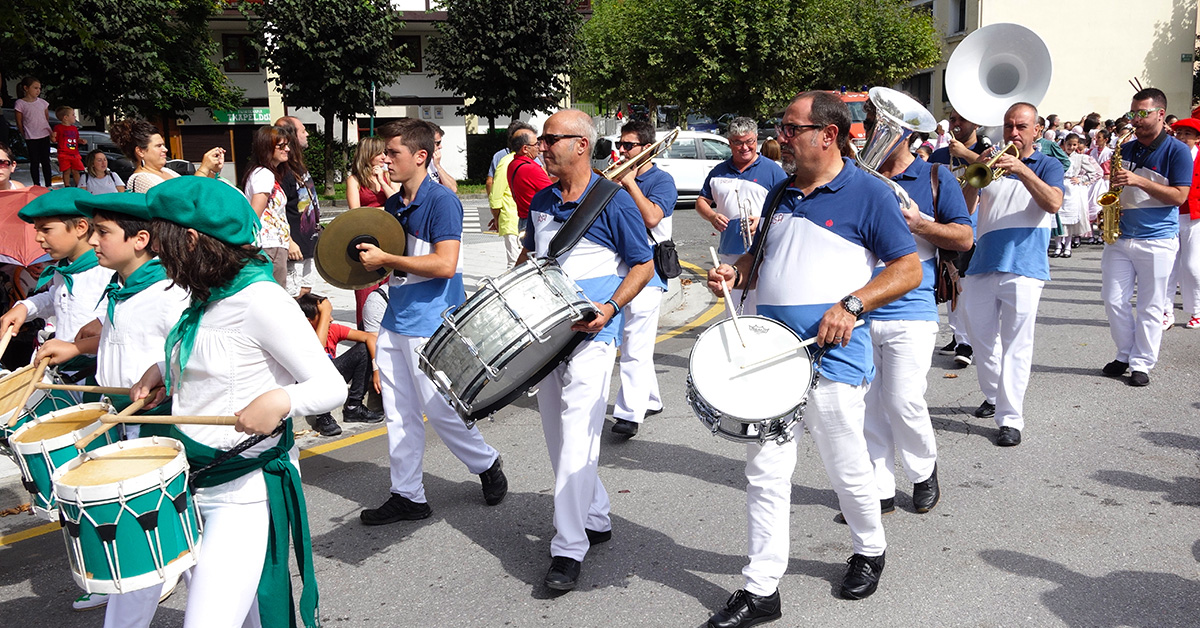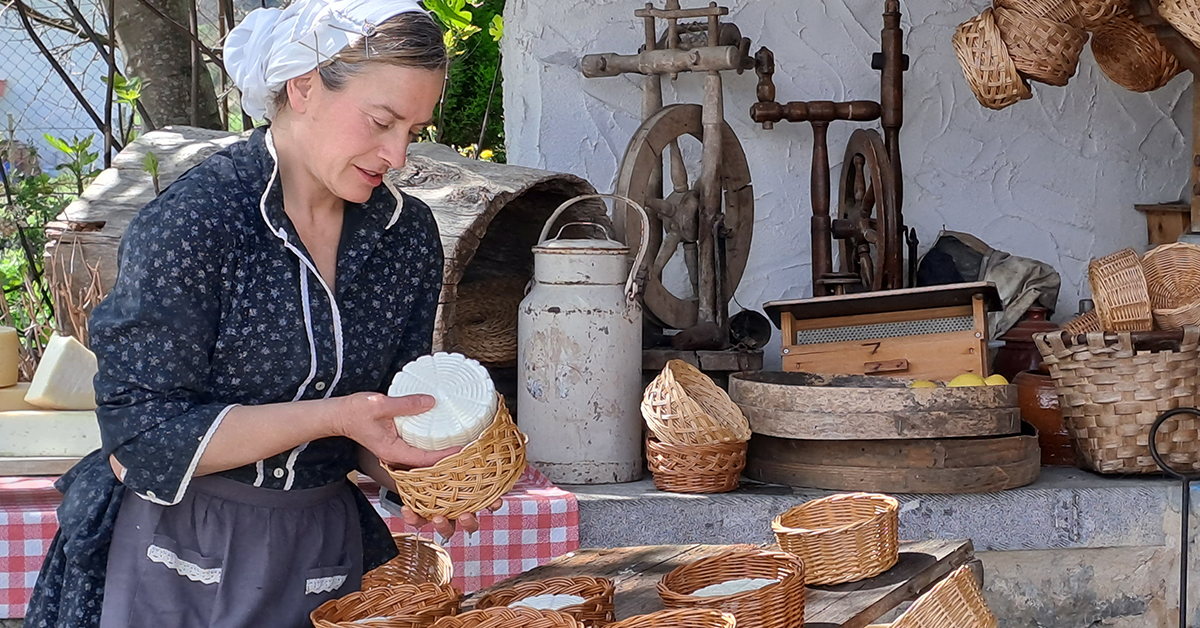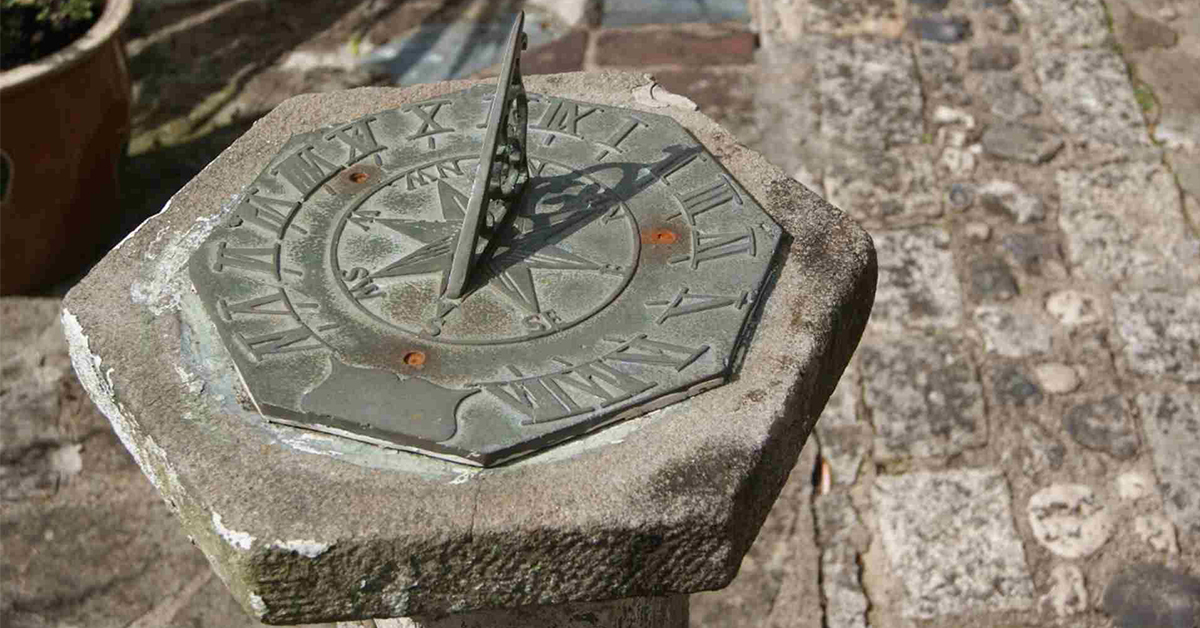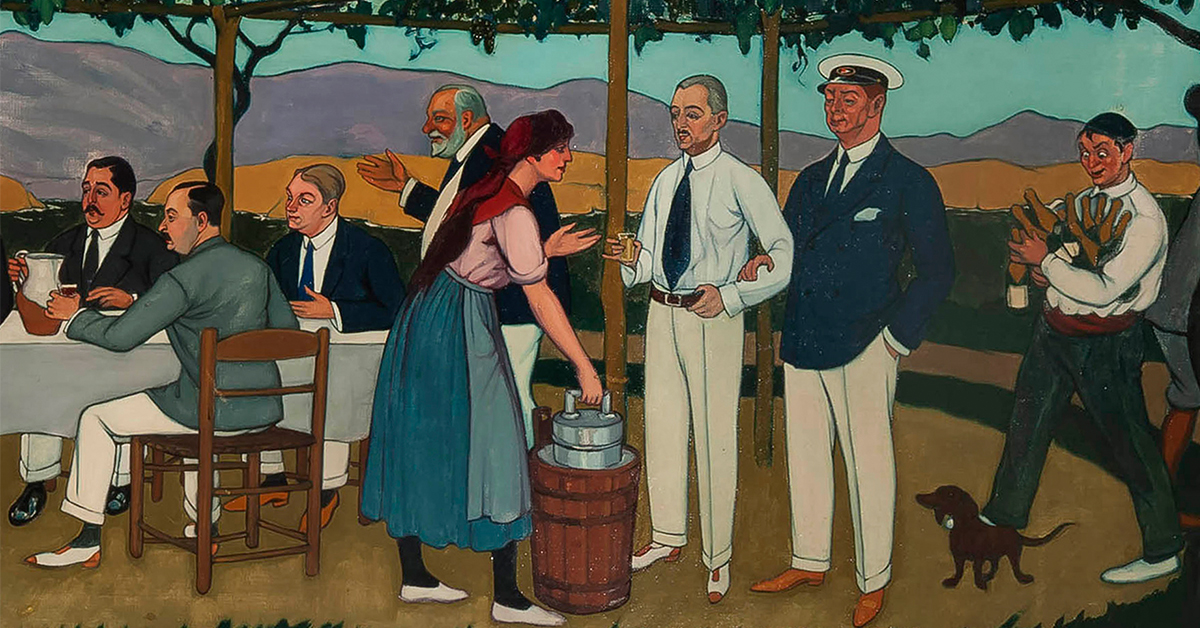Basque ethnography at a glance
We may not be aware due to the current inertia of daily life, but music is something that is usually at the centre of entertainment and, particularly, at festivities, weekends and different celebration.
Even though the need to play melodies, for different reasons, can be traced far back in time, we can basically differentiate between two uses for music performed in the street: entertainment or leisure and enjoyment; and ritual (religious and/or secular). Furthermore, whether travelling or mobile, on the one hand, and fixed or static, on the other, it coincides with the presence of the people in the spotlight, the musicians: who can be literate and illiterate; enthusiasts, professionals and beggars; instrumental or with voice accompaniment; locals or incomers.
Talking about traditional cheesemaking from an ethnographic standpoint subliminally brings to mind the picture of a shepherd in his hut pressing the curd into a wooden mould to extract as much whey as possible; that was at least the typical image mentioned in Gorbea, Aralar, Urbasa, Irati… and with good reason.
However, it should be noted that that was not the same everywhere. If our land is noted for something – and which makes us clearly stand out from other regions and other geographical areas – is that when it comes to analysing the methods and tools that our forebears used to make cheese, we discover that we here boasted a variety and wealth ethnographically speaking that was not found to such a diverse extent elsewhere. We just have to look at the moulds for draining the curd that were used in the past; they were made from wood (with and without a bottom, with a fixed or adjustable rim, made out of chestnut, beech, birch, etc.), ceramic, tin, wicker… (more…)
Time was marked by the sun in the rural world. Country folk had no need for a clock and hardly ever used one. Religious festivities marked the work calendar on the land, in the fields. The festivities were related to the harvests, the end of tasks such as threshing, harvesting grapes and other produce…
Some festivities celebrated the universal saints (John, Peter, Michael, Mark) and the origin of others dated back to specific points in time (St. Anthony the Abbot, St. Anthony of Padua, St. Ignatius of Loyola); there were also the major festivities celebrated by everyone (Easter Sunday, Assumption of Mary, St. Joseph’s Day, All Saints) or local saint’s days (Bartholomew, Blaise, Marina). Some of them set the rhythm of the agriculture work.
There are times when the smallest detail has much to tell. That is the case of a frieze that José Arrue painted for Bilbao Yacht Club in 1919, which was on the first floor of the Arriaga Theatre at that time. It is now owned by Iberdrola and is kept, along with other works of art, in its iconic Tower.
Well, one of the five fragments of the frieze shows a young girl preparing a lemonade frappe – a typical alcoholic beverage in Basque festivities of the past – to be served to visiting dignitaries. The young girl is depicted with her shirt sleeves rolled up and that is what is remarkable in this particular case.





